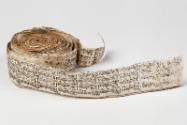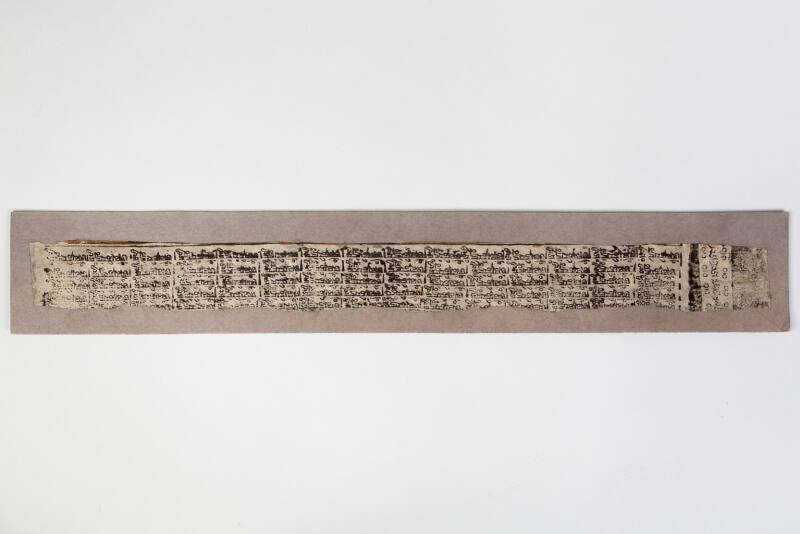Tibetan Prayer Scroll
OwnerOwned by
James Cromar Watt
(Aberdeen, Scotland, 1862 - 1940)
Datelate 19th Century
Object NamePrayer Scroll
Mediumvellum and ink (handprinted)
ClassificationsApplied Art
AcquisitionJames Cromar Watt Bequest, 1941.
CopyrightOut of copyright - CC0
LocationView by Appointment - Aberdeen Treasure Hub
Object numberABDMS014529
About MePrayer wheels are devices inscribed with mani prayers and containing sutra scrolls attached to their axels. Each turn of a prayer wheel represents a recitation of the prayer inside and transports it to heaven. Varying in size from thimbles to oil drums, with some the size of buildings, prayer wheels can be made of wood, copper, bronze, silver or gold. They can be turned by wind or water or rotated by hand and are often stuffed with prayers handwritten in pieces of cloth. Some prayer wheels have handles and look like devices that take up string on a kite. Others are large and hang from temples with thousands of prayers inside that when unraveled are more than a mile long. Pilgrimage paths (koras) are often lined with prayer wheel. Pilgrims spin the wheels to earn merit and help them focus on the prayers they are reciting.
Theoretically, Buddhist prayer wheels are allowed to slow down but never to stop. They are generally spun very quickly in a clockwise fashion. The merit earned from the written prayer (usually om mani padme hum written in Tibetan or Sanskrit) is regarded as weaker than that of a spoken prayer. The more prayers one offers, the more merit he or she earns, which improves his or her chances or receiving a higher reincarnation and eventually achieving nirvana. Yak grease is used on the handle to make them spin more quietly.
Possibly 19th century
James Cromar Watt
Qing Dynasty Qianlong/Jiaqing Period, 1736 - 1820
James Cromar Watt
Late 19th Century
Qing Dynasty, Qianlong Period, c.1795
Qing Dynasty, 19th century























